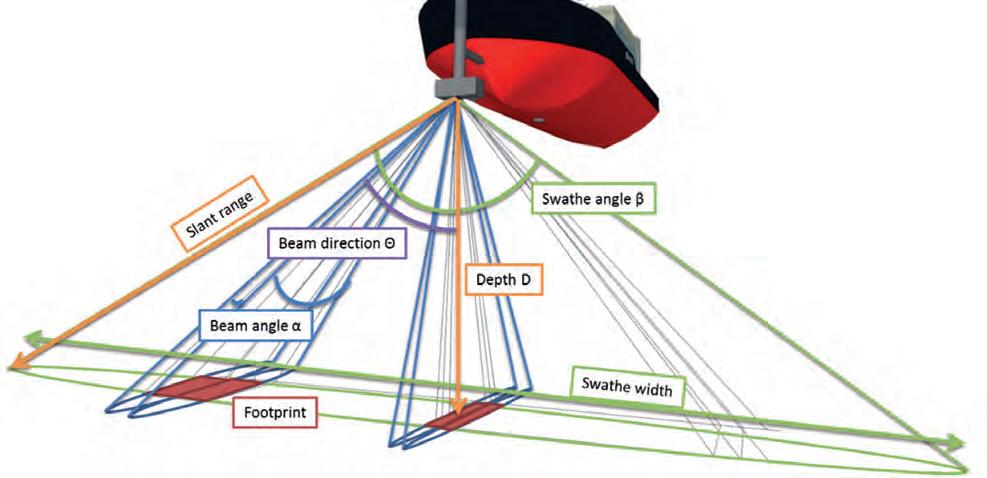beneath the transducer gives highly detailed information (at a high frequency). Another option often offered is the integration of an Inertial Motion Unit (IMU) with the MBES. This is often advertised as not needing any calibration, although most manufacturers mean that there is no additional calibration required between the MBES and the IMU. Performing an MBES calibration will also give the IMU calibration parameters. Sometimes ignored is the fact that the IMU also plays a role in the positioning system. This means that, even though the values can be obtained from the MBES calibration, they still need to be entered into the survey software to compensate for any positioning offsets.
Multibeam vs. SSS backscatter.
multi-frequency is especially useful for bottom classification. As materials can react differently to different frequencies, measuring the backscatter at different frequencies but at the same moment in time can give classification algorithms better information to work with.
provides at most around 1,024 backscatter points per swathe, whereas an SSS has a continuous signal. However, the MBES data may be more than enough for a general classification. If, however, more detail is required, it is advisable to use an SSS.
SSS vs Multibeam Echosounders
Other Options
With the backscatter option on the MBES, a common question is whether an SSS is still required. As described in an earlier article on SSS technology, the brief answer is that it is. The difference between MBES backscatter and a true SSS is that the MBES will provide one backscatter value per beam, whereas the SSS will provide an almost continuous signal, thus giving a higher resolution. So, an MBES
Besides the options described above, manufacturers offer additional options in their systems. An example is a dual head set-up. With this option, a much larger swathe can be created with swathe angles up to 240°, allowing surface to surface measurements for inspection work. The dual head option is often used in pipeline inspections. Some manufacturers also offer a pipeline mode, where a small sector
Huibert-Jan Lekkerkerk is a contributing editor, freelance hydrographic consultant and author of other publications on GNSS and hydrography and principal lecturer in Hydrography at Skilltrade (Cat B) and the MIWB (Cat A). info@hydrografie.info
Courtesy of Cadden
Making Hydrographers’ Tasks Easier
Navsight Marine Solution
Qinertia
State-of-the-art Motion & Navigation Solution
The Next Generation INS/GNSS Post-processing Software
www.sbg-systems.com
Hydro i n t e r n at i on a l
12-13-14-15_technologyfocus.indd 15
| s e p t e m b e r / o c t o b er 2 0 2 0 | 15
08-10-20 12:28






